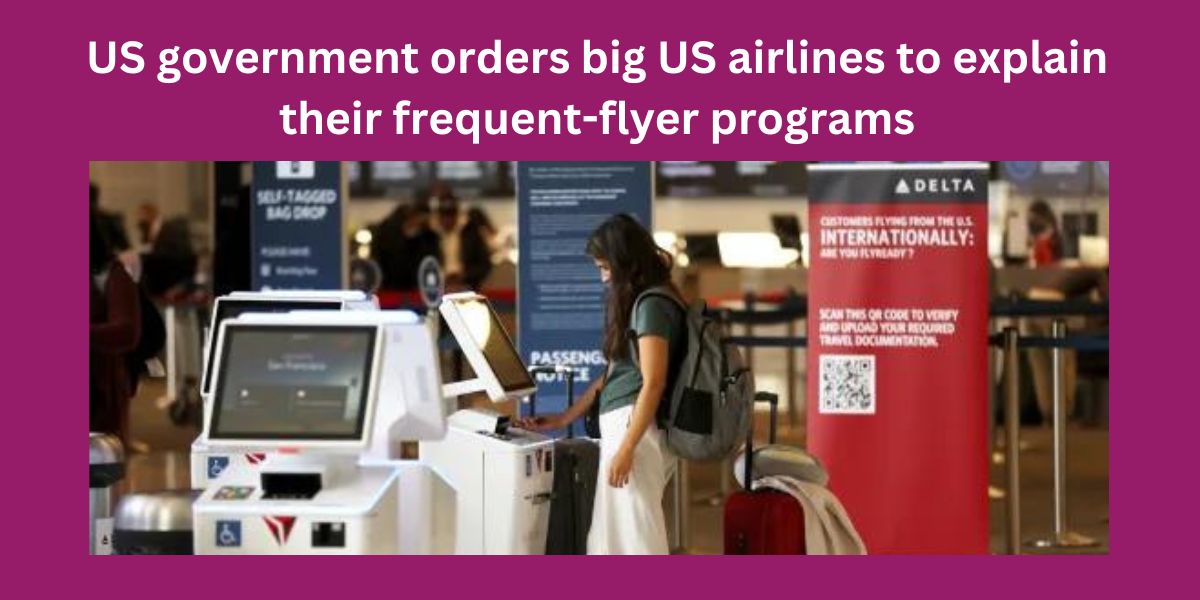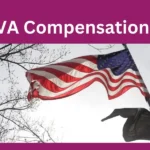Air travel has always been a popular means of transportation, but as more and more people take to the skies, competition between airlines intensifies. Frequent-flyer programs (FFPs) have become a critical tool for attracting and retaining customers. However, things are changing, and now the US government is stepping in to get some answers about how these programs really work.
What’s Going On With Frequent-Flyer Programs?
If you’ve flown even once in your life, chances are you’ve heard about frequent-flyer programs. These are loyalty programs designed by airlines to reward customers with points, miles, or other benefits based on the flights they take. In theory, it sounds like a great deal: fly more, earn points, and use them to book free or discounted flights later. However, these programs have become increasingly complex, and customers are often left confused about how they actually work. That’s where the US government comes in.
The Government Steps In
Recently, the US Department of Transportation (DOT) ordered major US airlines to provide detailed explanations about their frequent-flyer programs. Why? Because, let’s face it, many travelers are in the dark when it comes to understanding the real value of their earned miles or how they can redeem them. Consumers have voiced frustrations, and the government is now asking airlines to clarify the rules and restrictions tied to these programs.
Why Does This Matter?
You might be wondering, why is the government so interested in frequent-flyer programs? The answer lies in consumer protection. As more complaints pile up about unfair practices, hidden fees, and limited availability of reward flights, the government has decided it’s time to take action. With millions of travelers enrolled in these programs, the transparency—or lack thereof—can affect a large segment of the population.
The Complexity of Frequent-Flyer Programs
Frequent-flyer programs weren’t always this complicated. When they first launched, it was pretty straightforward: fly a certain number of miles, get a free flight. Now, however, airlines have introduced multiple tiers, fluctuating point values, blackout dates, and limited seat availability for rewards. For the average traveler, deciphering these terms can feel like trying to read a foreign language.
The Rise of Airline Alliances
One factor contributing to the confusion is the rise of airline alliances. Airlines have teamed up to create networks where customers can earn and redeem miles across different carriers. While this might sound like a perk, it often leads to frustration when passengers realize that redeeming miles across airlines isn’t as seamless as advertised.
Blackout Dates and Limited Availability
Let’s be honest: the biggest gripe with frequent-flyer programs is often the restrictions on when and how you can redeem your points. Blackout dates—those periods when you can’t use your miles to book flights—are a frequent source of frustration. And even when you can use your points, the availability of reward seats can be scarce, leaving many travelers feeling like they’ve earned points they’ll never be able to use.
The Government’s Demands: What Airlines Need to Explain
So, what exactly is the government asking from airlines? The DOT is demanding that airlines provide clearer information on how their frequent-flyer programs work, particularly around the following areas:
1. Redemption Rules
How easy is it to redeem miles? What are the restrictions? Airlines are being asked to simplify the explanation of their redemption processes, so passengers aren’t left guessing whether they’ll be able to use their points.
2. Blackout Dates
When can travelers use their miles? The government wants airlines to make blackout dates crystal clear to avoid confusion and disappointment for passengers.
3. Availability of Reward Seats
Airlines are also being told to clarify how many reward seats are available on any given flight. Right now, many travelers find that only a small percentage of seats are open for booking with miles, even though flights are mostly empty.
4. Points Expiration
Another hot topic: points expiration. Many airlines have policies that allow points to expire after a certain period of inactivity. The government is urging airlines to make these rules more transparent, so travelers aren’t caught off guard when their hard-earned points vanish.
5. Fees and Charges
It’s not uncommon for airlines to charge additional fees when redeeming miles, whether it’s for taxes, fuel surcharges, or booking fees. The DOT wants airlines to spell out all associated costs upfront, so travelers know exactly what they’re getting into.
What’s at Stake for Airlines?
Airlines rely heavily on their frequent-flyer programs. Not only do these programs foster customer loyalty, but they also represent a significant source of revenue. For example, airlines often sell miles to credit card companies or other partners, making these programs a lucrative business. However, if the government enforces stricter regulations or demands more transparency, it could impact how airlines structure their loyalty programs moving forward.
Balancing Profitability and Consumer Trust
There’s a delicate balance that airlines must maintain. On one hand, they want to maximize the profitability of their frequent-flyer programs, but on the other, they must keep customers happy. If passengers feel like they’re being misled or taken advantage of, it could lead to a loss of trust—and potentially business. The challenge for airlines will be to find ways to simplify their programs while still maintaining the profitability that comes from selling miles to partners.
How Will This Impact Frequent Flyers?
For frequent travelers, these new government demands could bring welcome changes. If airlines comply with the DOT’s requests for greater transparency, it might be easier for customers to understand exactly what their points are worth and how to use them. This could result in less frustration and a better overall experience for passengers.
Possible Simplification of Programs
One possible outcome is that airlines might simplify their frequent-flyer programs altogether. As it stands, many programs have become overly complex with multiple tiers, partner airlines, and redemption rules. If the government pushes hard enough, we could see airlines streamline their offerings, making it easier for customers to earn and redeem rewards.
More Consumer-Friendly Policies
Another potential benefit is that airlines might adopt more consumer-friendly policies. For example, they could offer more flexible redemption options, remove blackout dates, or increase the availability of reward seats. If airlines are required to disclose more information about their programs, they may also feel pressure to improve their offerings to stay competitive.
Will There Be Any Downsides?
While increased transparency sounds like a win for consumers, there’s always a chance that airlines will respond by tightening the purse strings. If frequent-flyer programs become less profitable for airlines due to government regulation, they might cut back on some of the perks or increase the number of miles required for redemption. So, while consumers may get more clarity, the actual value of their points could decrease.
The Role of Credit Cards in Frequent-Flyer Programs
It’s worth noting that frequent-flyer programs are closely tied to credit card companies. Many travelers earn the bulk of their points through co-branded airline credit cards, which offer miles for everyday purchases. The government’s scrutiny of frequent-flyer programs could also extend to these partnerships, potentially leading to changes in how rewards are earned through credit card spending.
Will Credit Card Benefits Change?
If the rules around frequent-flyer programs change, credit card companies may also need to adjust their rewards structures. This could lead to changes in sign-up bonuses, point multipliers, or annual fees. However, it’s too early to say exactly how credit card rewards might be affected.
What Happens Next?
The US Department of Transportation is still in the early stages of gathering information from airlines. Once they have the data, we could see new regulations or guidelines designed to make frequent-flyer programs more transparent. For now, travelers should stay tuned for updates and keep an eye on how their favorite airlines respond.
Conclusion
Frequent-flyer programs have long been a staple of the airline industry, but the increasing complexity of these programs has led to growing frustration among travelers. With the US government stepping in to demand clearer explanations from airlines, we could be on the verge of significant changes in how these programs operate. For frequent travelers, this could mean better transparency and potentially more user-friendly loyalty programs in the future. However, there’s also a possibility that airlines might reduce the value of their rewards if they’re forced to simplify their systems. Either way, travelers should be prepared for changes ahead.
FAQs
1. What is the purpose of frequent-flyer programs?
Frequent-flyer programs are designed to reward loyal customers with points or miles that can be redeemed for free or discounted flights and other travel-related perks.
2. Why is the government investigating frequent-flyer programs?
The government is looking into these programs due to consumer complaints about the complexity, lack of transparency, and difficulties in redeeming rewards.
3. What changes can frequent flyers expect?
If airlines are forced to comply with new transparency requirements, travelers may see clearer rules about point redemption, fewer blackout dates, and potentially simplified loyalty programs.
4. Do all airlines have frequent-flyer programs?
Yes, most major airlines have frequent-flyer programs to encourage customer loyalty, though the specifics of each program vary.
5. How do airline credit cards tie into frequent-flyer programs?
Many travelers earn frequent-flyer miles through co-branded credit cards, which offer points for purchases that can be redeemed for flights and other rewards.










